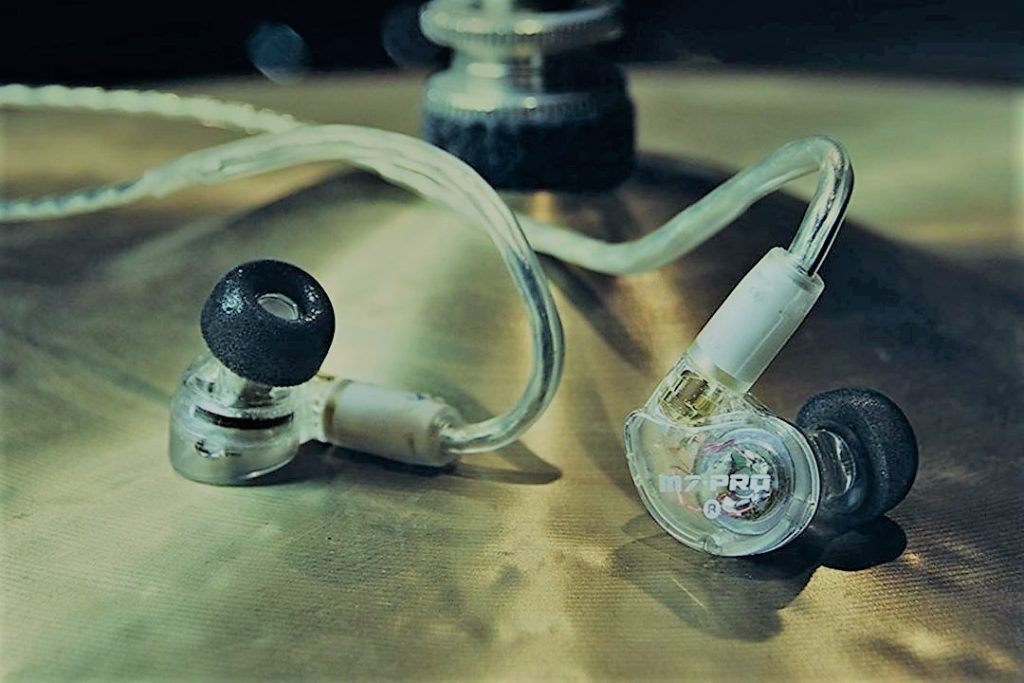Looking for the best In-ear monitors for drummers? Over the past two decades, IEMs became the industry standard when it comes to the stage and studio monitoring.
They also became more affordable and therefore, are no longer exclusive to professional musicians that play large venues.
If you stumbled across this article by chance and you don’t know what In-ear monitors are and what makes them so popular, here’s a small FAQ that might help:
What are In-ear monitors?
Many professionals, including musicians, audio engineers, field journalists, and TV hosts, use in-ear monitors, also known as IEMs.
They use them to listen to a personal audio mix or to hear directions from musical directors and producers, as well as metronomes and backing tracks that might even contain audio clues to make their life easier.
They offer a good deal of ear protection, which is crucial for drummers, in addition to a clear monitoring solution.
On top of that, they also give each musician on stage access to their own personalized mix without interfering with anyone else’s listening experience.
Additionally, they eliminate the need for stage wedges and free up space on sometimes-tiny stages.
With that in mind, it’s safe to assume everyone will have a better experience on and off the stage, and your ears will thank you in the long run.
They are typically sold as universal fits, which means they are ready to use right out of the box, or they can be custom-fitted to a person’s ear canal to offer even more comfort and noise reduction.
A complete in-ear monitor system includes a transmitter, a body-pack receiver, and a pair of earphones.
Multiple receivers can be reached by transmitters, which are frequently on the side of the stage. On the other hand, the receivers, where you plug in your earphones to hear the mix, are typically clipped to a belt or guitar strap.
Why are In-ear monitors so popular?
Here are some advantages that in-ear monitors (IEMs) have over wedge monitors for all parties involved:
Superior sound quality: Depending on the setting, wedges, and sound engineer, it may occasionally be difficult to hear clearly without turning the volume up all the way to the point where it will hurt your ears and affect the house mix. IEMs offer a better experience for the musicians, the technicians, and the audience because they deliver clear sound regardless of the setting and won’t cause any interference.
Hearing protection: prolonged exposure to loud noises can result in tinnitus or hearing damage. Because you need to hear the rest of the band loudly and clearly as a professional musician, you cannot wear earplugs. IEMs provide the best of both worlds because they can be adjusted to a safe volume and deliver crystal clear sound while protecting your ears from outside noise.
Lack of feedback: anyone who has ever worked on a live performance is familiar with the sound of feedback and how annoying it can be. It happens when a microphone picks up sound from a speaker while that speaker is playing sound from the microphone, which results in a loop. IEMs break the feedback loop because the speakers are actually in your ears, and there’s no way for the microphones to pick up their sound.
But there’s more…
Mobility: wedge monitors are directional, which means it only sounds as good as it gets in a specific spot. For drummers, that’s not much of a problem, considering we don’t move much, but for everyone else, IEMs are a blessing because the sound follows you, everywhere you go, even if you jump onto the crowd or switch sides on stage.
Portability: we all know how heavy amps and wedges are, so assuming you’re not performing in a world tour or something comparable, you’re most likely the one moving the gear around. A complete IEM system can be carried in a small backpack, saving you space and gas and it won’t take an unnecessary toll on your back.
Control: since you can easily change the volume yourself or choose between the various mixes, the best feature of IEMs is having direct control over what you hear. That’s precisely the reason I don’t expect anyone to switch back from IEMs to conventional monitoring after dabbling with them.
Stereo sound: the ability to listen in stereo, which is how our ears were designed to work and what feels most natural, is another advantage IEMs have over wedges. In a more natural environment, you’re able to perform better with a lower volume, so the audience and your older self appreciate that.
What are custom In-ear monitors?
If you assume they have the same specifications, there are some differences in terms of fit, comfort, and noise isolation between universal and custom IEMs, despite the fact that there are no significant differences in sound between them.
Universal IEMs are a good entry point, considering they’re more affordable and are ready to ship, which means there’s no waiting time.
In contrast, custom IEMs are molded specifically to fit your ear canal, making them more comfortable but also improving noise isolation over universal IEMs.
Since you don’t have to overcome external noises as much, you can also lower the volume of your mix, which in return prevents hearing damage.
On top of that, since they perfectly match your ear canal (or they should), they are less likely to slip out of it.
As a result, they are also more expensive than the typical universal IEMs, and because they are custom made, there is an additional process that must be completed before they can be shipped.
Wired or wireless In-ear monitors?
There is no right or wrong choice between wired and wireless in-ear monitors because each has advantages and disadvantages.
Wireless is a good choice if you’re a singer or other front-line musician because it offers total freedom of movement.
Given that we don’t move much as drummers, wired in-ear monitors are more than adequate for us. There is no need to run the risk of reception and interference problems.
Additionally, a wired system is typically more affordable, has better sound quality, and eliminates the need for additional batteries.
With that in mind, invest in wired IEMs if you don’t require the convenience of a wireless system.
Now that we know a thing or two about in-ear monitors, let’s talk about the features you should consider when buying the best in-ear monitors for drummers:
Noise Reduction
As a drummer, the most important feature to consider in IEMs is, by far, their noise reduction capabilities.
Whether music is a career or just a hobby, I firmly believe that ear protection should come first, for a drummer.
For as long as I’ve been playing drums, I’ve taken good care of my ears and I still have a mild case of tinnitus. Now imagine what would happen if I didn’t.
As we all know, drums are loud, and if you also have to increase your IEMs volume to compensate that, you’ll have hearing problems sooner than later.
That means you’re either going deaf thanks to the loudness of your drums, or the excessive volume of your IEMs.
To prevent both, some IEMs reduce up to 42 dB, which not only reduces the sound of your drums but also allows you to lower the volume of your mix.
This relieves pressure on your ears and eliminates any distractions, allowing you to pay attention to the music, which is what matters most.
Impedance
Impedance, if you haven’t heard of it, is the in-built resistance of the in-ears to the audio signal passing through them.
In other words, it refers to how much power your in-ears require to perform to the best of their ability.
Impedance is measured in ohms, and it typically ranges between 8 and 600 ohms (Ω) for in-ear headphones and IEMs.
Since higher impedance devices require more power to operate properly, external amplifiers may be needed to reach the necessary power levels.
These days, the industry standard for these products is 32 ohms, so the majority of smartphones and laptops can power them.
The convenience of not needing an amplifier is much more important in the end.
Sensitivity
Sensitivity relates to impedance, in the sense that it’s a measure of how loud a pair of IEMs or headphones will play at a given signal strength.
Technically speaking, it refers to the efficiency of a driver to turn an electrical audio signal into sound pressure.
In comparison to IEMs with lower sensitivity, IEMs with higher sensitivity will produce a louder sound at the same signal strength, so you won’t need to turn the volume knob as much.
A sensitivity rating above 110 dB is regarded as high, while anything below 86 dB is thought of as relatively low. This measurement is also known as efficiency or sound pressure level (SPL).
On top of that, you can’t properly compare sensitivity between models from different manufacturers, since they aren’t consistent with how they measure it.
Additionally, increased sensitivity increases everything else in the signal chain, including the obnoxious hiss coming from your amplifier, smartphone, or laptop, so it’s not necessarily better to have higher sensitivity.
Given that anything above 110 dB becomes unsafe after 30 minutes, the sensitivity of IEMs is typically in the 80 to 125 dB range, which is more than enough.
Frequency
The commonly accepted audible frequency range for human hearing is 20 to 20 000 Hz, and frequency response is simply the range of bass, mids, and treble.
Wider ranges may be offered by some products, but a better frequency response doesn’t always imply better sound quality.
The frequency response of a pair of IEMs shows us the frequencies of audio signals the device can reproduce, which means how accurately they will play the audio.
The frequency spectrum is divided into a few bands, or ranges, as well. The bass frequency range is defined as anything below 250 Hz and the treble range as anything above 4 000 Hz. We refer to the area in between the two as the midrange.
Spare Parts
To prevent future headaches, buy from reputable brands that have a vast stock of spare parts, including extension cables, complete drivers, and ear tips.
If possible, buy IEMs with cables that are at least partially reinforced in problematic zones, to reduce the number of times you need to replace them.
In case that’s not possible, make sure the IEMs you’re interested in have a detachable cable, so it won’t be a total loss if it gets damaged.
Another thing you should look for in IEMs is interchangeable ear tips so you can choose the one that fits your ear canal better to guarantee comfort long term. They should also be able to fit both foam and silicone ear tips.
Now that we know a thing or two about In-ear monitors, let’s take a look at the best in-ear monitors for drummers:
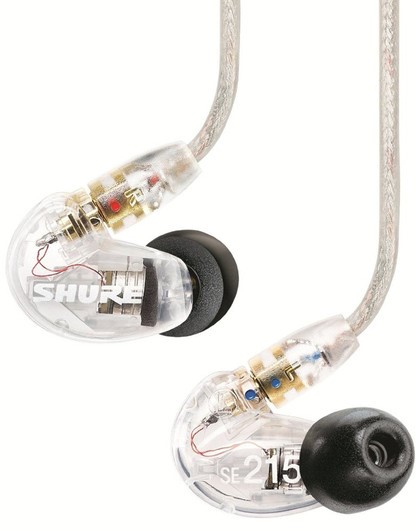 You’ll quickly learn that Shure is among the most reputable IEMs manufacturers in the world for a variety of reasons.
You’ll quickly learn that Shure is among the most reputable IEMs manufacturers in the world for a variety of reasons.
Most people believe that the SE215 Pro are the best IEMs under $100. They are therefore a fantastic choice for those on a tight budget or those who are just getting started with IEMs.
On top of that, it has a single dynamic MicroDriver speaker, so it can’t reproduce the full range of frequencies like some pricey multi-driver in-ears can, but it’s adequate for most people.
They come with a clear, black, or blue earpiece and are comfortable to wear for extended periods of time due to their light weight and low profile.
Fortunately, the SE215 Pro isolates up to 37 dB of outside noise, allowing us drummers to concentrate on hearing the details of our mix.
Additionally, it includes a 64″ reinforced cable that is strong enough to withstand the demanding lifestyle of a touring musician.
It is easily replaceable because it is detachable, and Shure is renowned for having an extensive inventory of spare parts.
The SE215 Pro works well in most consumer electronics and reproduces sound in a range that is close to that of human hearing, with a 20-ohm impedance and a frequency range of 22 Hz to 17.5kHz.
Additionally, the package includes a zippered soft carrying case, a cleaning tool, and a fit kit with small, medium, and large foam and silicone sleeves so you can choose the most comfortable and tight fit.
As you can see, the Shure SE215 Pro checks most boxes for less than $100, making them the best IEMs for those on a tight budget.
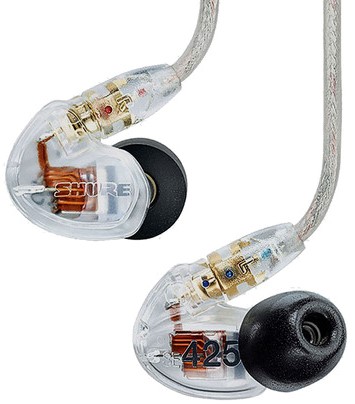 My next recommendation is also from Shure, and it’s a good choice for someone looking for more features than the SE215 Pro offers as an entry-level model.
My next recommendation is also from Shure, and it’s a good choice for someone looking for more features than the SE215 Pro offers as an entry-level model.
It has two high-definition drivers that can produce a sound that is much more accurate and natural than what the SE215 Pro is able to.
They are just as lightweight as the previous model, and thus, just as comfortable. This model in particular is only available with clear ear pieces.
On top of that, they block up to 37 dB of external noise so you can easily follow the band you’re playing with.
To achieve that level of noise isolation, the package includes the same foam and flex sleeves with three different sizes found on the SE215 Pro, and an additional pair of yellow foam sleeves and triple flex sleeves.
Along with the 64″ reinforced clear cable, it also includes a similar zippered soft carrying case.
The cable is also detachable, and you can easily buy replacement cables and sleeves directly from Shure.
Another good addiction is the ¼” adapter it comes with, which allows you to quickly switch between 1/8” and ¼” (3.5 and 6.3 mm) jacks and connect them wherever.
With a frequency range of 20 Hz to 19 kHz and an impedance of 22 ohms, the SE425 Pro works with any smartphone or laptop and nearly covers the human hearing range.
As a result, the Shure SE425 Pro is a fantastic choice for someone who doesn’t want to rock with entry-level gear, or break the budget.
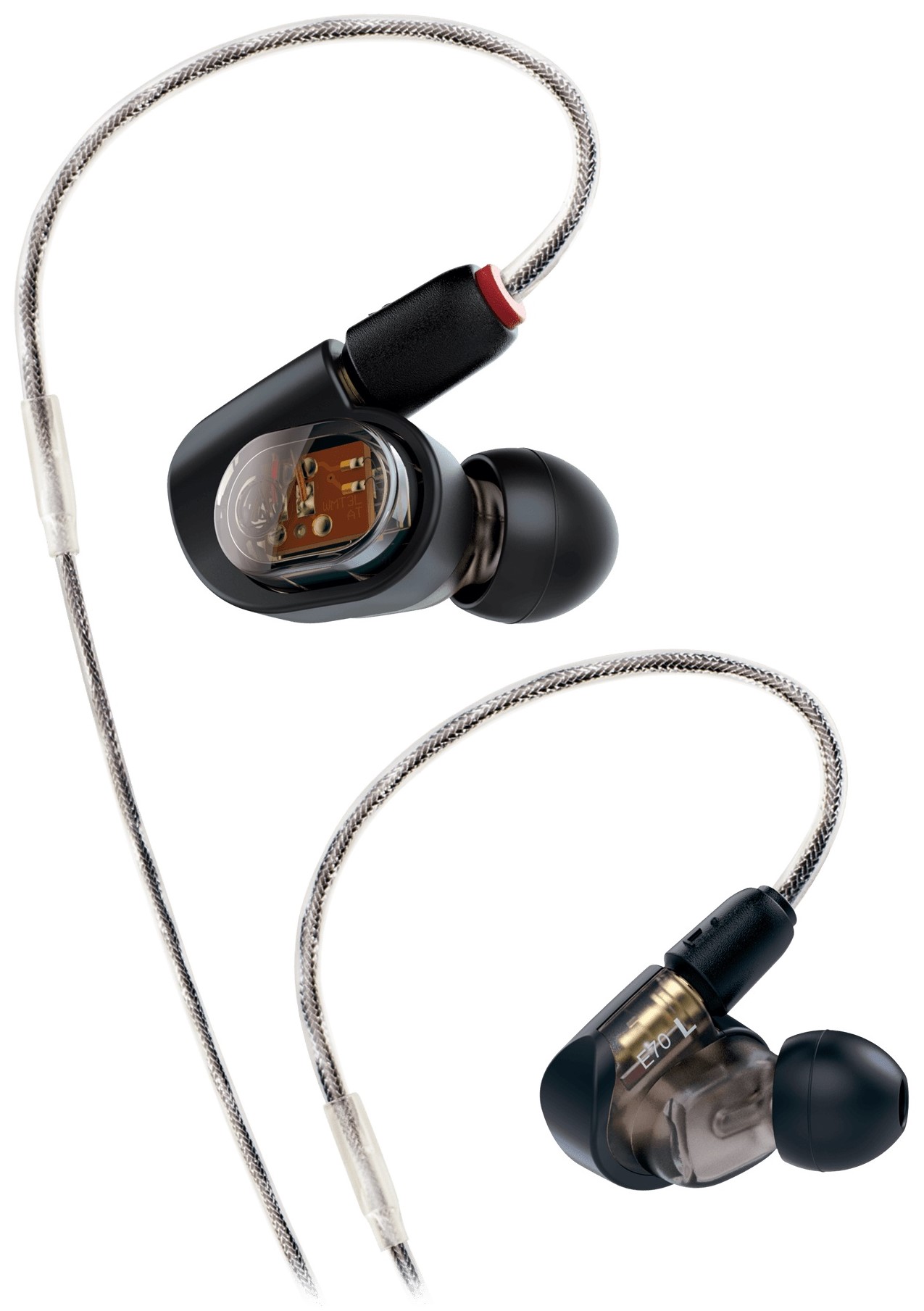 My first non-Shure suggestion is a step up from my previous suggestions, both in terms of features and price.
My first non-Shure suggestion is a step up from my previous suggestions, both in terms of features and price.
It’s the first model on the list with three balanced armature drivers that provide an accurate, detailed, and balanced mix, no matter what you’re listening to.
Each package comes with a total of four sizes of silicone ear tips, as well as a medium-sized pair of Comply T500 foam ear tips for you to create a custom fit.
Thankfully, this is another model with a 5.2” detachable cable with exceptional durability and a 1.4” (6.3 mm) adapter.
Just like Shure, Audio-Technica also has a vast stock of replacement parts to make sure your IEMs last as much as possible.
Additionally, it includes a soft carrying case so you can easily transport the IEMs and all the accessories wherever you go.
Unfortunately, it only reduces outside noise by up to 26 dB, which is far from ideal for us drummers, but with the right ear tips, it still performs admirably.
It pretty much covers the entire range of human hearing with a frequency range of 20 Hz to 19 kHz.
On the other hand, with 39 Ohms of impedance, it requires almost twice as much power as the previous two options to work properly, but it still won’t be a problem for consumer electronics.
Overall, the Audio-Technica ATH-E70 Pro is a good upgrade to entry-level options and I’m pretty sure you won’t trouble justifying its price tag.
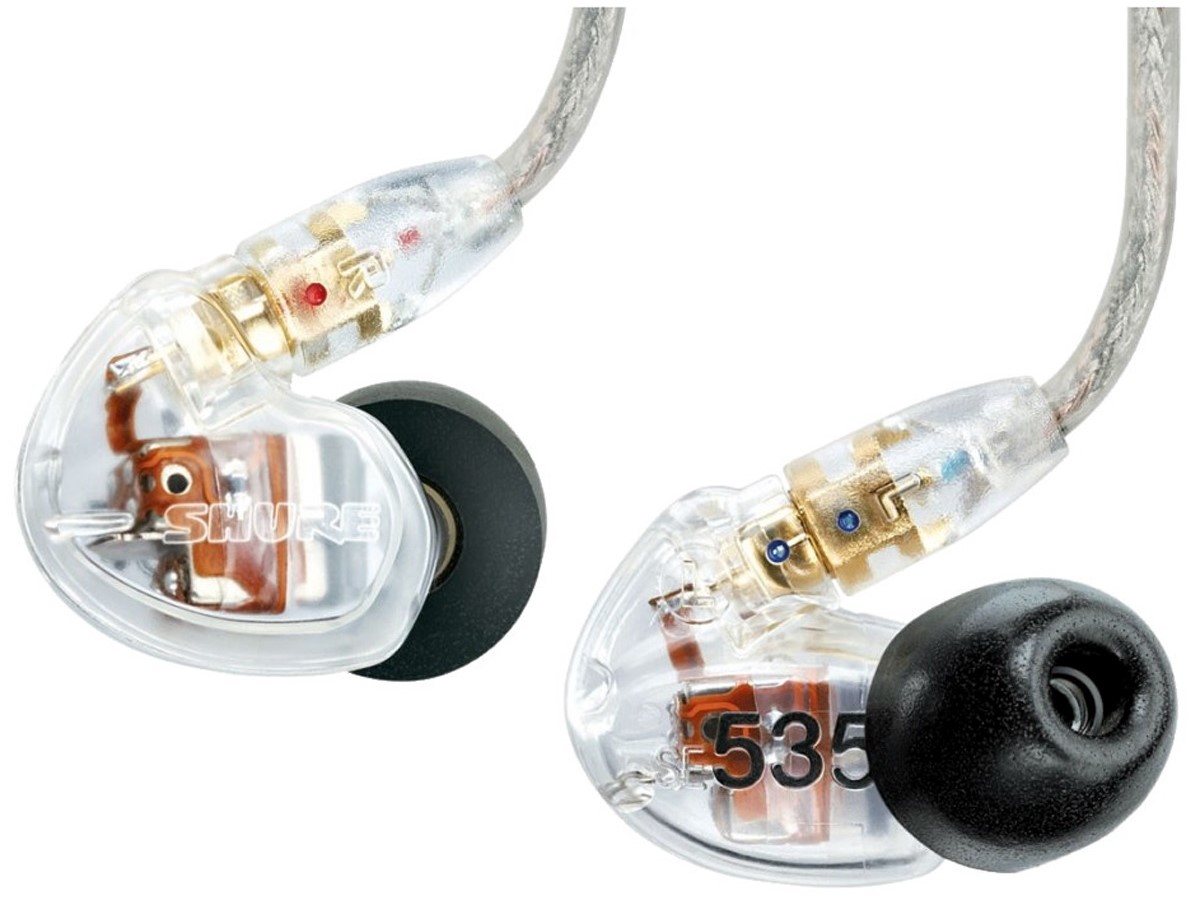 And we are back with Shure. I told you earlier that Shure is the most reputable IEMs manufacturer in the world, and I wasn’t kidding.
And we are back with Shure. I told you earlier that Shure is the most reputable IEMs manufacturer in the world, and I wasn’t kidding.
The SE535 Pro model competes directly with the Audio-Technica ATH-E70 Pro both in terms of features and price.
The SE535 Pro, in contrast to the other two Shure recommendations, has three high-definition drivers that cover the entire frequency spectrum with the required clarity and balance for a professional musician.
On top of that, it reduces outside noise by up to 37 dB so you can concentrate on what matters.
That level of noise isolation is achieved using one of the many sleeves that provide a custom fit – foam, soft flex, yellow foam, and triple flex sleeves.
Additionally, the package includes a zippered carrying case, and a ¼” (6.3 mm) adapter to increase its compatibility.
The Shure SE535 Pro has a reinforced, detachable 64″ cable so you can easily replace it if necessary, similar to the earlier options.
It has 36 ohms of impedance, so whatever you use to listen to music, backing tracks or metronomes won’t have a problem powering it.
Its frequency range of 18 Hz to 19kHz covers most of the spectrum of human hearing which is important for any professional musician.
To conclude, the SE535 Pro is everything a touring drummer needs and is well worth the cost, despite the fact that they are not Shure’s flagship IEMs.
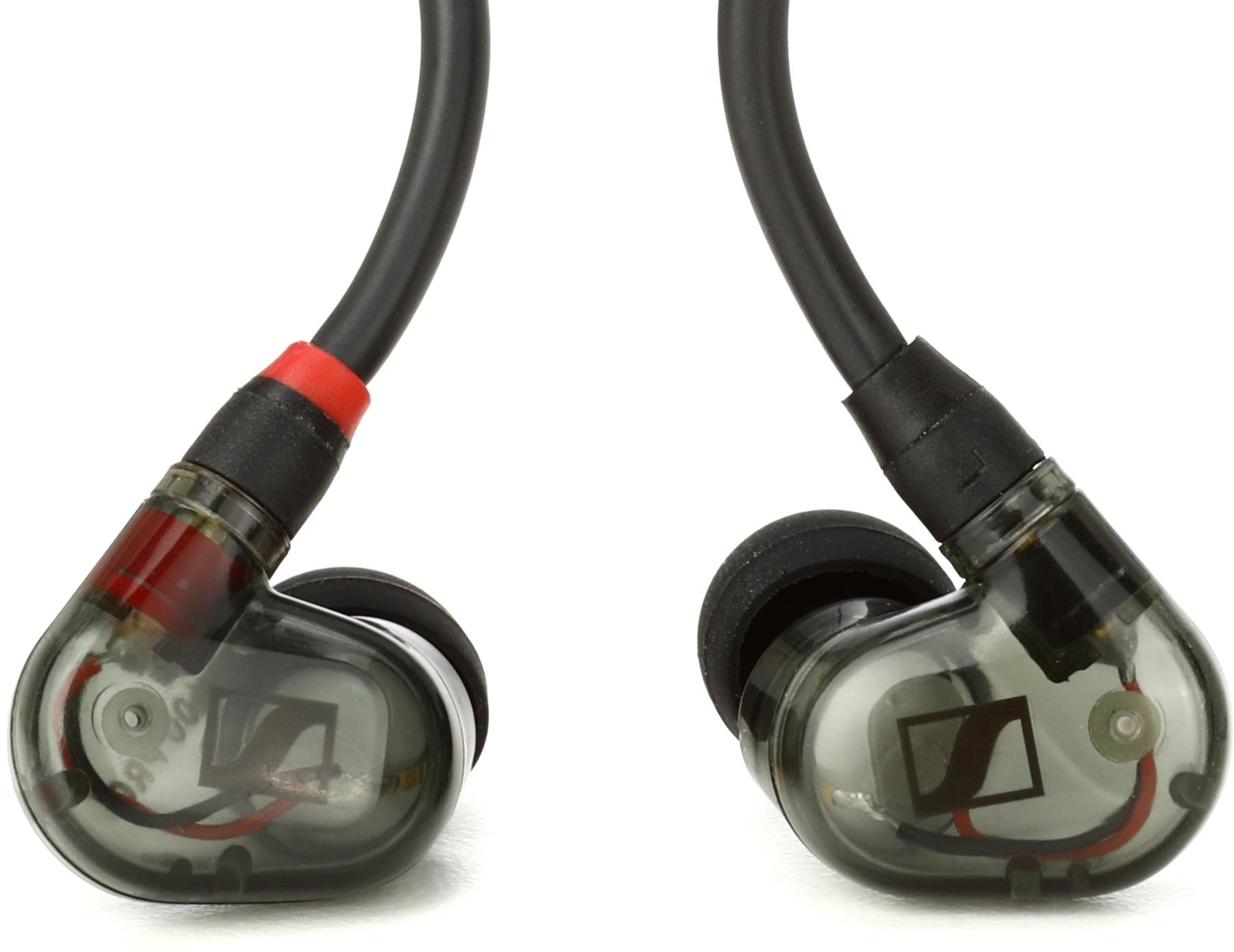 My final suggestion comes from Sennheiser, one of the leading manufacturers of anything related to headphones, in-ear monitors, and microphones.
My final suggestion comes from Sennheiser, one of the leading manufacturers of anything related to headphones, in-ear monitors, and microphones.
The IE 400 Pro has a single driver that operates across the entire frequency range, and for a single driver, it performs admirably.
When it comes to noise isolation, they reduce up to 26 dB, which is decent for IEMs, but far from the best, as we’ve seen before.
On top of that, it features a detachable 4.26″ cable with a break-proof connection and a reinforced ear hook, to guarantee it lasts as much as possible. If not, Sennheiser has a supply of multiple spare parts like cables, adapters, and ear tips.
To help you find the ideal fit, this particular model includes silicone and foam ear tips in 3 different sizes.
The set also includes a cleaning tool to keep your IEMs clean, one 1/4” (6.3 mm) jack adapter, and a transport soft case.
With only 16 Ohms impedance, it’s the easiest IEMs on the list to power, so that shouldn’t worry you at all, anything can provide it enough juice.
Plus, the 6 Hz to 19kHz frequency response means it will closely match the human hearing range, so you won’t miss anything.
Overall, for someone who doesn’t want an entry-level IEM or the $500 alternative, the Sennheiser IE 400 Pro is a strong contender.
Conclusion
As we have seen, each and every one of my recommendations checks the majority, if not all, of the boxes I previously mentioned.
Additionally, I’ve covered everything from entry-level choices to professional-grade IEMs, so there’s a choice for every budget.
In conclusion, the Shure SE215 Pro is your best option if you’re on a tight budget or have never used IEMs before and want to try them out without breaking the bank. They’re a $100 well-spent investment.
As a huge fan of Shure IEMs, I believe that the Shure SE535 Pro offers the best value when it comes to purchasing something that any professional musician would enjoy using.
In any case, I’m confident you’ll be pleased with any of the other 3 options as well, since they’re all among the best in-ear monitors available.
I hope this article achieved its main purpose of education on the importance of IEMs, and which are the best in ear monitors for drummers.

